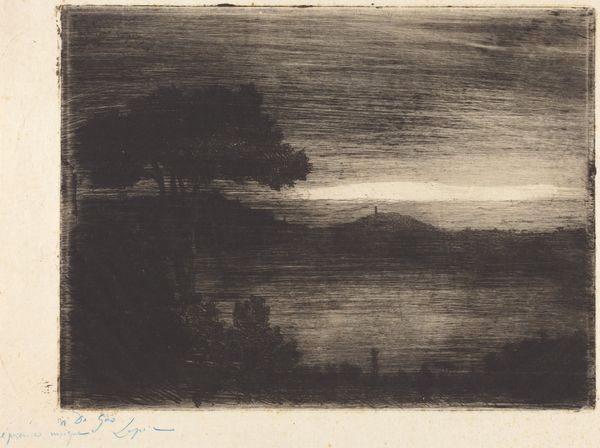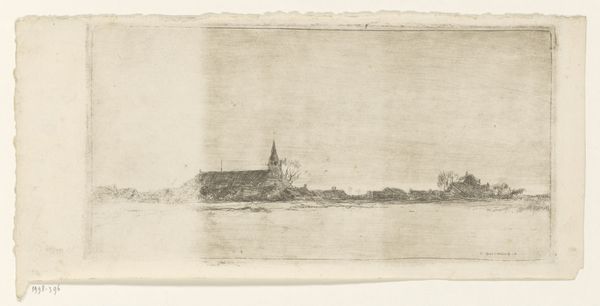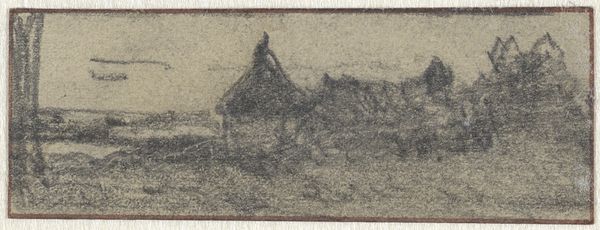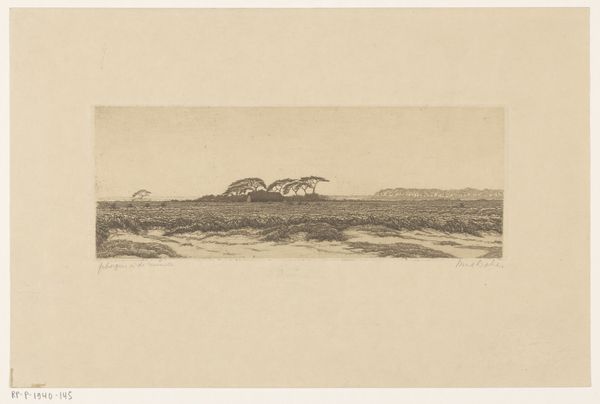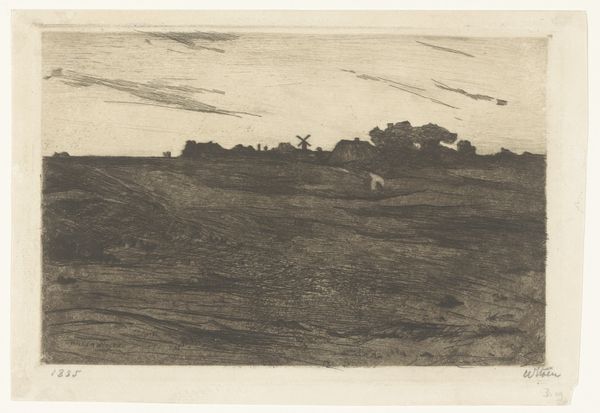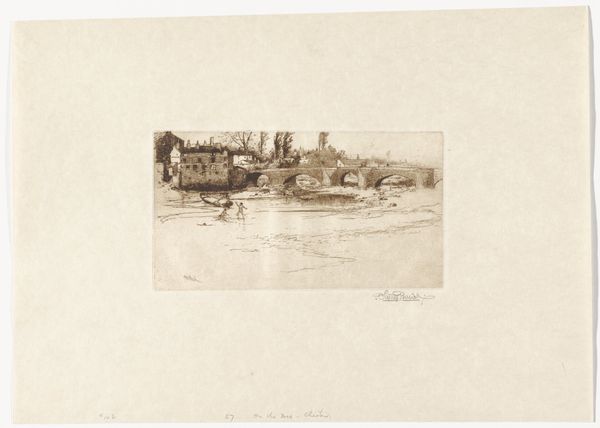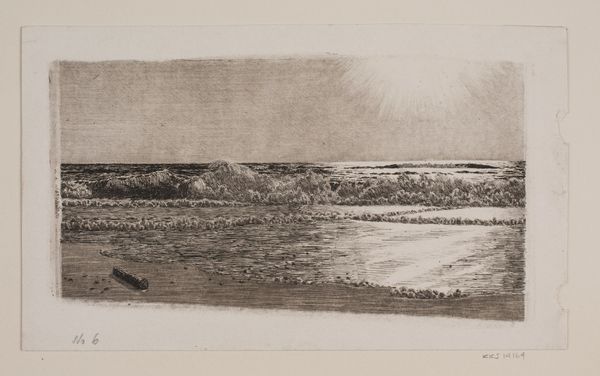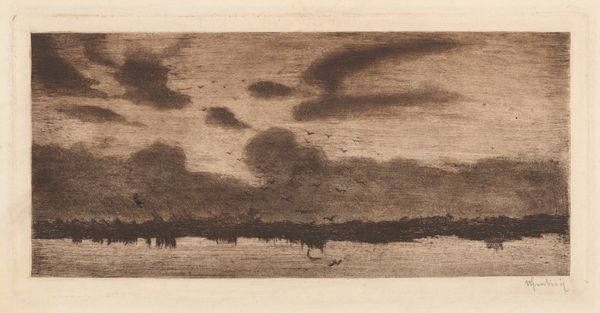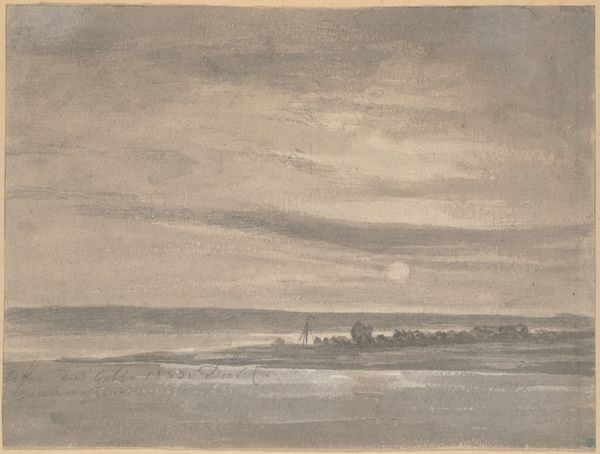
print, etching
# print
#
etching
#
landscape
#
realism
Dimensions: plate: 9.9 x 13.3 cm (3 7/8 x 5 1/4 in.) sheet: 24.4 x 31.8 cm (9 5/8 x 12 1/2 in.)
Copyright: National Gallery of Art: CC0 1.0
Editor: This is Charles Jacque's "Waterside Village," created in 1848, using etching as a medium. The tonal range achieved through etching gives the print a somber feel, especially in the sky. How should we understand this depiction? Curator: For me, this etching invites us to consider the labour involved in its creation. The material process of etching, the time spent layering the tones to evoke this mood – it speaks volumes about Jacque’s connection to the land and its inhabitants, especially considering his rural subject matter. Editor: I see that. The buildings are almost silhouetted. Can you expand on the materiality in the print? Curator: Consider the zinc or copper plate itself. Etching involves corrosive acid interacting with the metal. So, you can think of Jacque, in 1848, engaging with industry to translate landscape, life, and labour into art. The very materials become storytellers of his era. It shows the intimate work of an artisan. Editor: It seems like it makes his rural scene, with the windmills, a symbol of industrial development as well? Curator: Absolutely. Jacque's choice of subject—the waterside village, the windmills—represents a direct observation and documentation of contemporary life. He acknowledges its social context in relation to nature. What's your view? Editor: Now that you mention it, by emphasizing the physical labor required for its creation, we recognize value in a wider sphere, outside of art as something inherently separate from ‘craft’. It’s amazing what attention to material can reveal. Curator: Agreed! This kind of analysis connects art to broader questions of value and work.
Comments
No comments
Be the first to comment and join the conversation on the ultimate creative platform.
